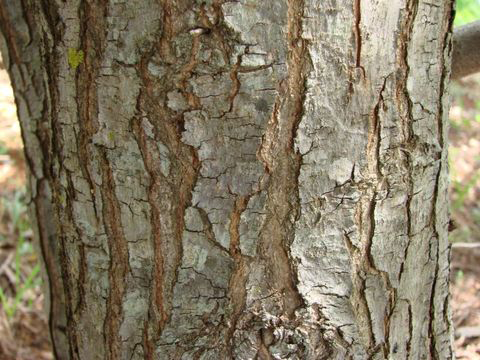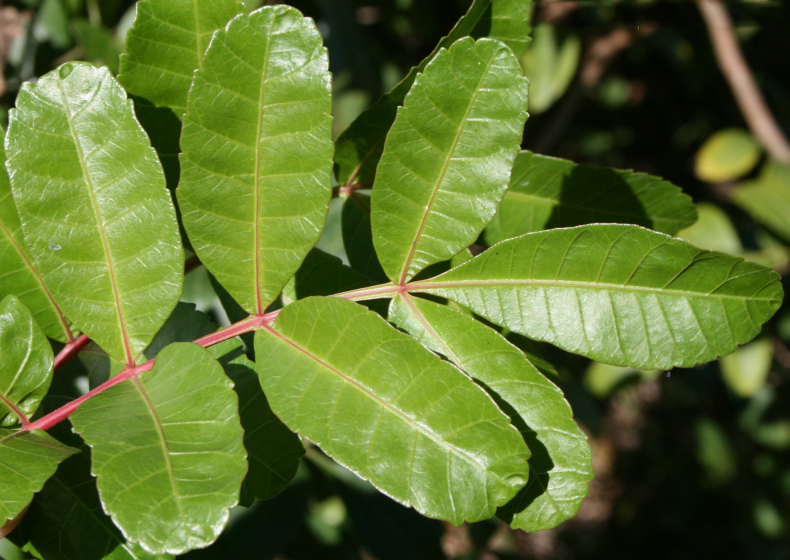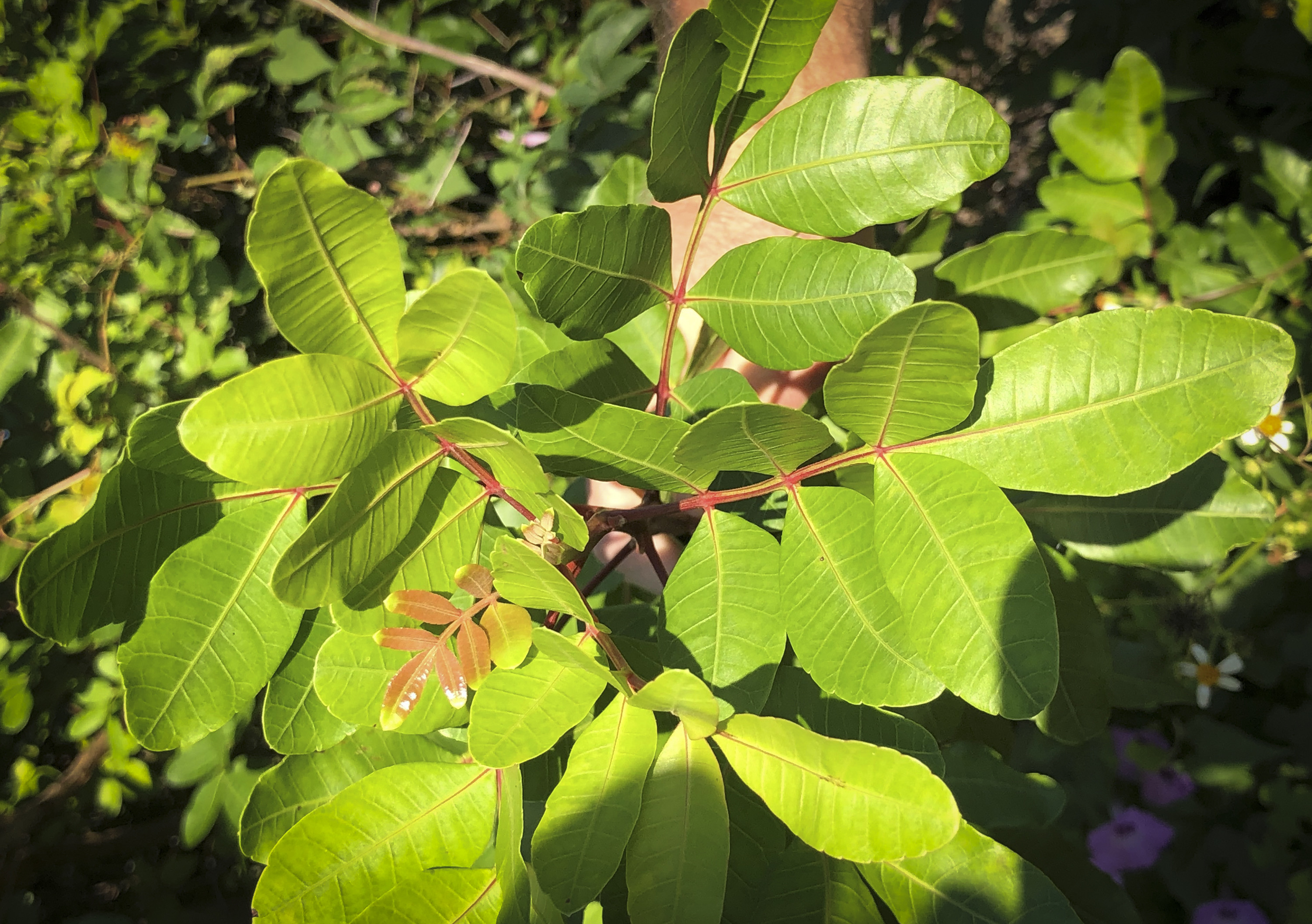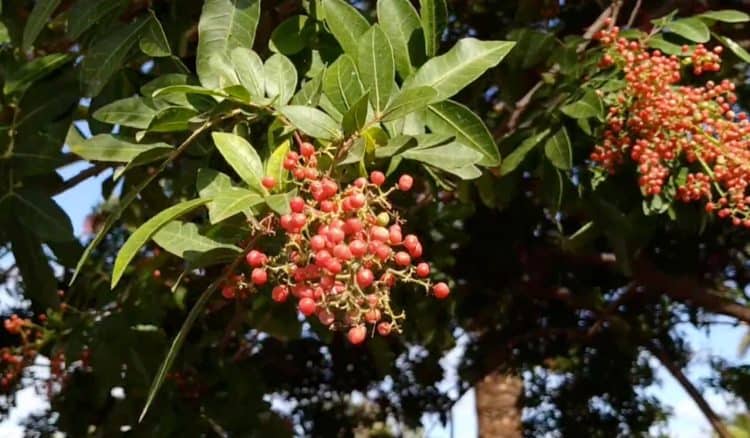brazilian pepper tree rash
Afterwards the red raised rash is noticed. The family Anacardiaceae contains poison ivy poison oak poison sumac and Schinus terebinthifolia or Brazilian peppertree.

Aci Land Aquatic Management Brazilian Pepper Tree Removal
Contact with most parts of Brazilian pepper can cause an itchy skin rash and sometimes inflammation and swelling of the face and eyes.

. Eating the seeds can result in death for humans and dogs. Brazilian pepper-tree is native to Argentina Paraguay and Brazil. Physical contact with sap can cause severe skin irritation in the form of rash and itching.
N this does lead to other reactions to bodyYou may do following to have relief-1Just wait watchIt is the time which is the best. This most hated plant can invade aquatic as well as terrestrial environments making it doubly dangerous. The Brazilian pepper tree does not produce peppers but instead draws its name from its peppery aroma.
Dogwood tree Leaves of Three Let It Be. New areas of rash often continue to develop for 7 days. The flowers and fruits can cause respiratory irritation.
Reduce to a simmer for 5 minutes. The species was brought into Florida in mid-1800 for use as an ornamental plant. Its against the law to sell or.
Avoid touching the trees cambium. The insects known as thrips were reared as part of a joint partnership between the South Florida Water Management District SFWMD the US. The rash commonly develops blisters.
The species name has been very commonly misspelled as terebinthifolius. The fluid from these blisters cannot spread the rash. Department of Agriculture plant hardiness zones 8 through 11 and Brazilian pepper tree growing 15 to.
Brazilian pepper is a noxious weedy shrub from South America. It is closely related to the poison oak Toxicodendron diversilobum poison ivy Toxicodendron radicans and poison sumac. The sap and crushed berries possess a.
Brazilian pepper tree also called Florida holly. Several local and federal agencies today took another step in protecting Americas Everglades by releasing an insect reared to combat the invasive Brazilian peppertree. Strain and add to a cup.
From my experience with other plants that are problematic for me and others Brazilian Pepper Tree in FL years ago Star Jasmine in San Francisco its more usually a matter of a red irritated itchy line where a cut end of a branch scratched you as you were pulling it out of the plant while pruning or while you were moving a pile of prunings. Some individuals are very sensitive to touching only the leaves. Like poison ivy Brazilian pepper is a member of the Anacardiaceae family.
This spreading of the rash occurs when the plants oils spread around to new areas. Pathfinder II is pre-mixed with a. Once called Florida holly for its bright red berries Brazilian pepper branches were often used as Christmas decorations in Florida.
Use proper protective gear when sawing the tree. Brazilian Pepper is in the same family of plants as Poison Ivy Poison Oak and Poison Sumac and thus can cause extreme skin irritation and cannoot be burned. Up to 25 cash back Hello The rash from brazilian pepper does occur due to substance of the category known urshiolThe corticosteroids used for treatment for this rash in less then the doses of 2 are useless more temporary relief.
Airborne bloom emissions can cause sinus and nasal congestion chest pains sneezing headaches and eye irritation to. This subtropical plant species is a relative of poison ivy. 21 September 2017.
The Brazilian pepper tree is a highly aggressive prolific and hardy shrub. People sensitive to poison ivy oak or sumac may also be allergic to Brazilian peppertree because it also has the potential to cause dermatitis to those with sensitive skin. The Brazilian Pepper tree also known as the Florida Holly is an invasive species from South America that has spread throughout Florida and the Southeastern US.
Several studies have confirmed Brazilian pepper tree to be toxic against Staphylococcus. To make it sweet add some jaggery powder sugar or honey to it. Wear gloves long-sleeve shirts long pants and eye protection when cutting Brazilian pepper trees.
The folk medicine uses of pepper tree are many and include relief from symptoms of ulcers respiratory concerns diarrhea and skin concerns. The Brazilian pepper tree Schinus terebinthifolius or Florida holly may be the most common cause of allergic contact dermatitis in southern Florida. Imported from South America in the 1840s Brazilian peppertree quickly spread into natural areas taking over native tree hammocks pine flatlands and mangrove forest communities.
Yet residents and visitors of Florida must also be on the lookout for another plant that could cause them to break out into an itchy and uncomfortable rash. Add some water and put it to boil. 1 However most contemporary uses of Brazilian pepper tree are focused on its activity against harmful organisms.
Brazilian pepper-trees bark between one half and one foot from the ground. When those with sensitive skin come into contact with the sap located on the leaves of the plant they can develop a dermatitis reaction. 6 rows Brazilian pepper tree has been used as a remedy for ulcers respiratory problems wounds.
The Brazilian pepper tree. Specifically the Brazilian Pepper represses the gene that transfers antibiotic resistance and the one that controls the production of bacterial toxins thus lessening the. Schinus terebinthifolia is a species of flowering plant in the cashew family Anacardiaceae that is native to subtropical and tropical South AmericaCommon names include Brazilian peppertree aroeira rose pepper broadleaved pepper tree wilelaiki or wililaiki Christmasberry tree and Florida holly.
Cover the pot and switch off the flame. Fact 2 - The rash comes from direct contact with urushiol. Both trees provide dense shade with California pepper tree growing 25 to 40 feet tall in U.
It sends up root suckers and new shoots when it is cut. Brazilian pepper red berries and leaves can cause vomiting and the sap can cause a rash in sensitive people. Now mix tulsi leaves cloves and dried Brazilian pepper tree leaves together.
Take a steel pan and heat it. Brazilian pepper trees come in many different sizes ranging from a small shrub as it is often found when growing in a shaded. Native to central South America the Brazilian pepper tree was originally introduced to Florida as an ornamental plant in the mid-1800s for its attractive foliage and clusters of small.
If you are allergic to poison oak or poison ivy then assume you are allergic to all of these plants andor plant parts. A rash can result. The smell of the invasive tree can actually cause respiratory problems for some people with extended exposure.
Garlon 4 is diluted with a penetrating oil. Exposure to the inner bark of freshly cut Brazilian pepper trees can result in a skin rash. The rash begins when you touch ingest or breathe the urushiol allergen.
South Florida Water Management District.

Brazilian Pepper Tree Facts And Health Benefits

Brazilian Pepper Tree Facts And Health Benefits

Brazilian Peppertree Invading Eglin Ecosystem Eglin Air Force Base Article Display

Brazilian Pepper Tree Mlalazi Estuarine Floodplain Inaturalist

Avoid The Brazilian Pepper Tree Schinus Terebinthifolius An Invasive Species Gardening Channel
Brazilian Pepper Tree On Most Hated Plants List

Best Herbicide Products For Getting Rid Of Brazilian Pepper Tree Solutions Pest Lawn

Pinellas County Extension Timely Topics Toxic Plants

Superbugs Meet Your Worst Nightmare This Pepper Tree

Brazilian Pepper Tree Mlalazi Estuarine Floodplain Inaturalist

Brazilian Peppertree Schinus Terebinthifolia มะต มแขก Madtuum Khaaek Thaifoodmaster

Brazilian Pepper Tree Mlalazi Estuarine Floodplain Inaturalist
5 Natural Remedies For Poison Ivy Rashes Allegheny Kiski

Brazilian Pepper Tree Facts And Health Benefits

Brazilian Pepper Tree Facts And Health Benefits

Tasting Hawai I With Moloka I Chef James Temple Is The Hawaiian Christmas Berry Toxic

Brazilian Pepper Tree Mlalazi Estuarine Floodplain Inaturalist
